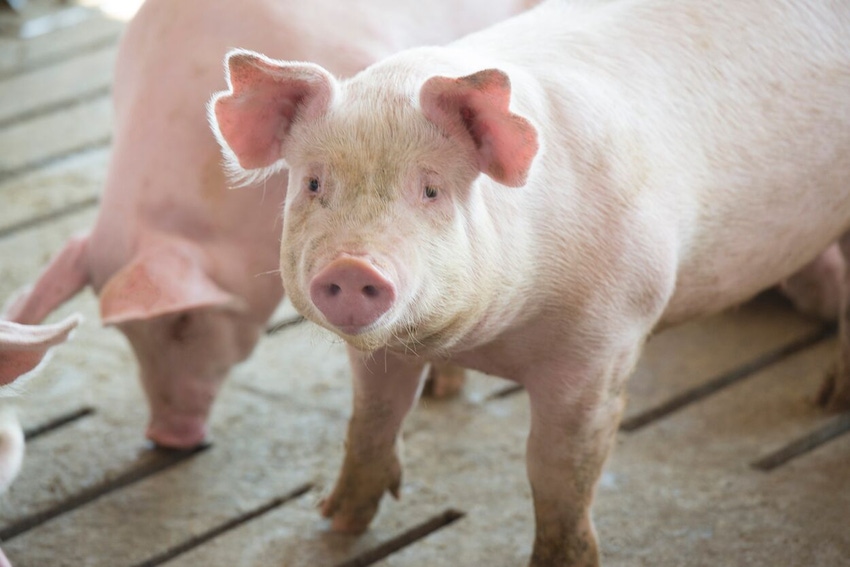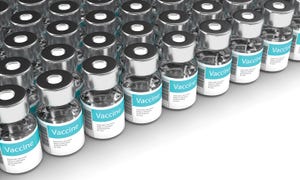Lessons learned from APP investigation
Hazard analysis, epidemiological study reveals several high-risk entry events in grow/finish.

While U.S. grow/finish facilities have put more biosecurity control practices in place in the last five years, Derald Holtkamp says the problem is more and more "hazards" continue to be introduced.
"As we push labor harder, as we've relied more on contracted services, you name it … we've added hazards," says Holtkamp. "For every biosecurity control measure we put in place, we add about three hazards, and so, we're just losing the race. We're adding hazards faster than we're adding control measures."
The Iowa State University professor of swine production medicine dived into those "hazards" during his investigation into an Actinobacillus pleuropneumoniae (APP) serotype 15 outbreak in growing pigs that occurred in central Iowa between November 2021 and January 2022. He recently shared his team's findings from the Swine Health Information Center-funded study at the 2022 Iowa State Swine Day in Ames.
An obligate intracellular bacterium, APP has a relatively short duration of expected life outside the pig. However, it does have some ability to survive longer, if it's protected by some mucus, fluids or in carcasses, and it can survive in colder temperatures as well. It is transmitted either by direct transmission — pig to pig contact — or indirect transmission — fomites or aerosol spread over very short distances.
From November 25, 2021, to January 24, 2022, 20 cases of APP were submitted to the Iowa State University Veterinary Diagnostic Laboratory. All of the cases stemmed from wean-to-market or finisher phase units within nine production systems.
Holtkamp and his team selected seven cases for intensive outbreak investigations, with the primary objective to assess how bacteria was moving from one herd to another. Geographically, the cases were from a four-county area.
As far as timing, Holtkamp says there were two dates in the timeline where there was more than one case, and then on Dec. 15, 2021, a derecho came through central Iowa. Three cases were reported on Dec. 29, 2021, with more following in January.
"That kind of set off seemingly a cluster of cases in time, and so, the question there is, is that significant, does that maybe suggest that aerosol transmission might have played a role here?" Holtkamp says.
Except for one case that was in pigs less than 10 weeks old, the rest of the cases in the investigation were in the late finisher phase. Rapid onset of mortality characterized these cases as well as typical APP clinical signs such as dyspnea, lethargy, anorexia, cough and cutaneous hyperemia.
Four of the seven cases investigated were associated with stress events:
Movement of pigs between barns during the marketing phase
Dramatic change in the outside temperature
Power outage and curtains failed to drop
Power and water outage
Holtkamp says three of the seven cases investigated and seven of the 20 cases overall were in the marketing phase.
"These are late finishing pigs … the reason this is so devastating from an economic standpoint, you get all that expensive feed in these pigs, and they die at the end, right before you are going to market them," Holtkamp says. "So, you lose the revenue and there's no consolation prize."
The next part of the team's investigation was what Holtkamp refers to as a combination of a "hazard analysis and an epidemiological investigation." The investigation period examined the 14 days before the first clinical signs at the seven sites and all the different entry events that happened during that period.
"An event is something we define where something came into the farm, and we call that a pathogen-carrying agent, something came into the farm that could have brought the virus with it, so that could be a pig, could be any other fomite, truck, trailer, animal other than a pig, anything like that," Holtkamp says. "We organize those around events. So, for example, an employee entry event, you got the employee themselves, but you also have their vehicle and any equipment, maybe their food, lunch or whatever, if they bring that with them too."
The team then ranked the events low, medium or high as to the likelihood that they may have been involved with the lateral introduction of the bacteria. For five of the seven cases rendering was ranked high, which Holtkamp attributes to much uncertainty surrounding the process on grow/finish sites.
"For example, with dead pickup, rendering pickup, they don't know when that render comes," Holtkamp says. "Most of the time, they're not there when it showed up. And even if they are, they're busy, so they may not even notice it."
In this investigation, the team found only one renderer worked in the specific geographic area of the outbreaks. Since they were not able to examine invoices and GPS trackers from the firm's trucks, Holtkamp says it created a little bit of a "black box" as to determine the exact routes the trailers and rendering trucks were following.
"From an epidemiological standpoint though, three of these seven sites were already in the marketing phase," Holtkamp says. "So, they were sending trucks all over the state of Iowa. If that were involved, you would've expected to see these cases happening in a wider geographic area, not all clustered right here."
While rendering was high on their list, other events the team rated high were market pig transport with multiple packing plants involved, third-party contracted trucking companies being used, trailers not being washed properly between loads and contracted load out crews.
"Most of the time these are contractors, they're not employees. And many times, those same crews that do load out will do vaccines as well," Holtkamp says. "Because they're contracted out, they know the person they write the check to. They can ask them, 'are you exclusive to our company' and the answer will always be yes … they don't know if people that person hires were at a different site the day before."
In almost all the cases, there were caretakers going to multiple sites every day. The most extreme case had one caretaker that visited eight different wean-to-finish sites. The employee, who maintained that they shower in/out of every site, was responsible for hauling out mortalities, injections, checking water and feed, vaccines and early pig care.
Another case had a caretaker, who couldn't get all the pigs out that day, and so a production supervisor and another individual assisted. The caretaker was the only one who had on a pair of coveralls and boots. The other two wore street clothes.
"The production supervisor decided that he needed to go to a second site that day and do something, we don't know what it was, but that site broke three days later," Holtkamp says. "In that case, that's pretty good evidence that's probably how it got transmitted there."
Holtkamp acknowledges emergencies happen, but there needs to be a backup plan in place to deal with those events. Producers also need to consider their biosecurity plans when emergency repairs are needed, or power outages occur.
One of the seven cases had a repair event that happened during that time and a third party contracted crew they had never worked with before was used. The crew didn't do any cleaning or disinfection of the equipment, just brought it in directly. The crew also didn't know where any of the supplies came from.
Finally, the investigation examined the operational connections between production systems, which Holtkamp says was not surprising within the industry. From rendering and feed mills to trailer washes and packing plants, many sites were utilizing the same firms.
Holtkamp says his take-home from the investigation is while biosecurity measures may have improved in grow-finish sites over the last few years, the number of potential hazards for virus introduction are not going down.
"In the last 35 years as production has consolidated and become more specialized with almost every input (feed, labor, etc.) now coming from outside, that creates lots of contacts, lots of opportunities to get contaminated, and lots of opportunities to bring swine viruses and bacteria into farms," Holtkamp says. "We're relying more and more on contracted services. We lose that control, lose the knowledge of what's going on. All these things we have created, what I would describe and people in the food industry would probably describe, as a very open production system."
The 11th annual Iowa Swine Day was held June 30 at Iowa State University. More information on the conference and sponsors can be found here. Videos and presentation files for many of the plenary and concurrent sessions can be found on the Iowa Pork Industry Center YouTube channel.
About the Author(s)
You May Also Like





